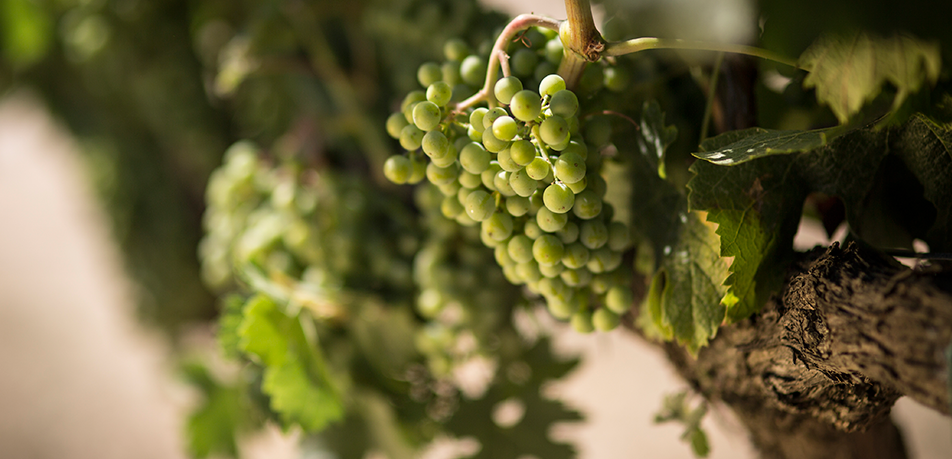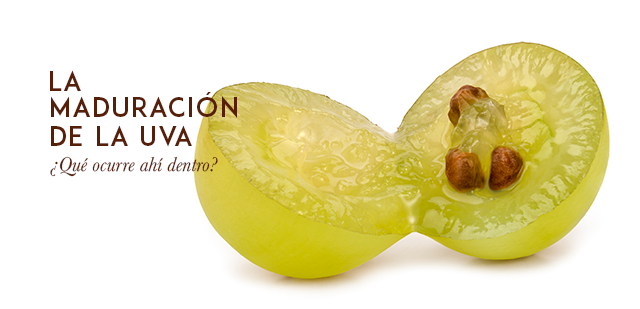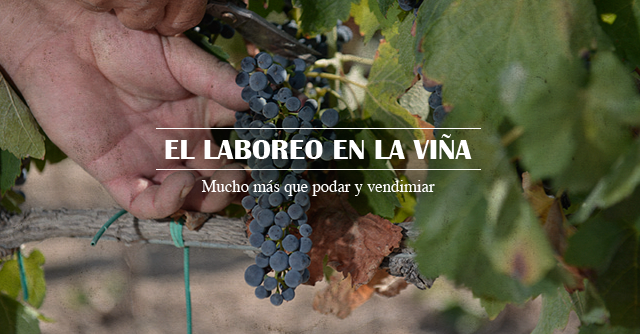ANATOMY OF A GRAPEVINE

In its wondrous biology, the grapevine offers a beautiful and perfect analogy to our own life cycle. Every single component of the plant has a specific function that contributes to the overall development of a perfect and complex entity.
Grapevine species
More than sixty grapevine species exist in the world, although only a handful are used in modern viticulture, for example:
- Vitis Vinifera: The main Eurasian species. Our foremost collaborator and companion. It produces all of the grape varieties that are used in winemaking. Estimates point to the existence of between five and ten thousand varieties of vitis vinifera.
[[{"fid":"15206","view_mode":"default","fields":{"format":"default","alignment":"","field_file_image_alt_text[und][0][value]":false,"field_file_image_title_text[und][0][value]":false},"type":"media","field_deltas":{"1":{"format":"default","alignment":"","field_file_image_alt_text[und][0][value]":false,"field_file_image_title_text[und][0][value]":false}},"link_text":null,"attributes":{"height":797,"width":1197,"style":"height: 333px; width: 500px;","class":"media-element file-default","data-delta":"1"}}]]
Cabernet Sauvignon variety of vitis vinifera at the Mas La Plana vineyard.
- Vitis Riparia, Rupestris and Berlandieri: These are all North American species, which are not commonly used in winemaking. However, all three of these sub-species are immune to phylloxera and are therefore used as “hybrid rootstocks,” meaning they provide the root system for grafted grapevines.
The parts that make the whole: anatomy of a grapevine
All of the grapevines mentioned above share the same structure, which we will analyze part by part to fully understand the magic of its physiology.
- Roots: They are responsible for absorbing the water and nutrients that the vine needs. They also anchor the plant to the ground and store carbohydrates, which allow the vine to survive the cold winter.
- Canes and shoots: Shoots refer to the new growth that the plant produces every year. Once these are lignified (turn woody), they are referred to as canes. Every cane has protuberances along its length, which are called nodes. Life can develop in every node in the form of leaves and flowers or leaves and tendrils. Precious buds form at the precise point where the petiole (the leaf stalk) meets the cane.
- Leaves: They represent the heart, the driving engine of the vine. The leaves are responsible for photosynthesis, thus setting in motion the entire process that provides the plant with oxygen and glucose, which is crucially important. Although glucose concentrates in the fruit, its energy reserves can also be directed toward the plant's other vital functions.
[[{"fid":"15209","view_mode":"default","fields":{"format":"default","alignment":"","field_file_image_alt_text[und][0][value]":false,"field_file_image_title_text[und][0][value]":false},"type":"media","field_deltas":{"2":{"format":"default","alignment":"","field_file_image_alt_text[und][0][value]":false,"field_file_image_title_text[und][0][value]":false}},"link_text":null,"attributes":{"height":320,"width":481,"style":"height: 333px; width: 500px;","class":"media-element file-default","data-delta":"2"}}]]
Mature shoot with growing leaves. At the Mas La Plana vineyard.
- Tendrils: As opposed to trees, grapevines cannot stay upright on their own. This is why they need a structure to hold on to and curl around for support, such as a trellis wire.
- Flowers and berries: The flowers are the reproductive organs of the grapevine. They initially grow in clusters called inflorescences. Every pollinated flower will turn into a berry. This means the inflorescences will eventually transform into the coveted grape cluster.
[[{"fid":"15210","view_mode":"default","fields":{"format":"default","alignment":"","field_file_image_alt_text[und][0][value]":false,"field_file_image_title_text[und][0][value]":false},"type":"media","field_deltas":{"3":{"format":"default","alignment":"","field_file_image_alt_text[und][0][value]":false,"field_file_image_title_text[und][0][value]":false}},"link_text":null,"attributes":{"height":365,"width":552,"style":"height: 331px; width: 500px;","class":"media-element file-default","data-delta":"3"}}]]
Inflorescences at the Mas La Plana vineyard.
- Buds: Buds grow where the leaf meets the cane. Once formed, they spend the growth cycle maturing within a layer of bud scales. At the end of this phase, every bud contains the structures that will yield shoots/canes, leaves, flowers and tendrils in the subsequent cycle.
- One-year-old wood: During the winter, the mature shoots turn woody and become the new canes. By the spring, the canes will have become one-year-old wood. Usually, the grapevine only produces fruit on canes that grew from the buds of the previous year. This means the grower has to know how to properly manage the one-year-old wood through winter pruning. This one-year-old wood will be referred to as either a cane (if it contains between eight and 15 buds) or a spur (between two and three buds).
- Old wood: Old wood consists of the plant's trunk and arms or cordons, but not all vines share the same structure. This wood is older than one year, and its quantity depends on the pruning method. During the cold winter, the old wood stores carbohydrates that provide the necessary energy to nourish shoot growth until the leaves can generate the resources for the vine to fully develop.
[[{"fid":"15211","view_mode":"default","fields":{"format":"default","alignment":"","field_file_image_alt_text[und][0][value]":false,"field_file_image_title_text[und][0][value]":false},"type":"media","field_deltas":{"4":{"format":"default","alignment":"","field_file_image_alt_text[und][0][value]":false,"field_file_image_title_text[und][0][value]":false}},"link_text":null,"attributes":{"height":871,"width":1308,"style":"height: 333px; width: 500px;","class":"media-element file-default","data-delta":"4"}}]]
One-year-old wood and old wood on a Cabernet Sauvignon vine at the Mas La Plana vineyard.
Every component, every minute function, represents a complex and perfect biological design. Nature provides us with profound wisdom, which is humbling and demands that we listen and respect it, because only then will nature give us the very best of itself.



